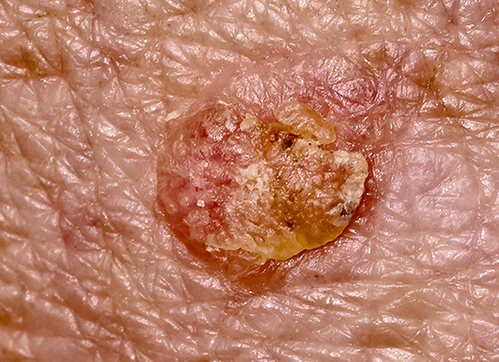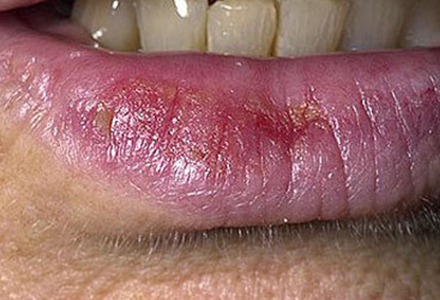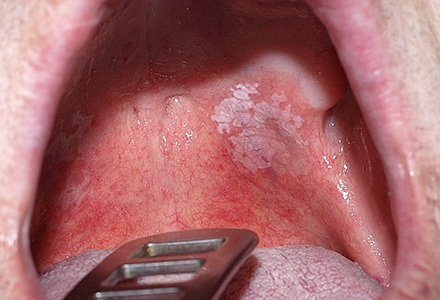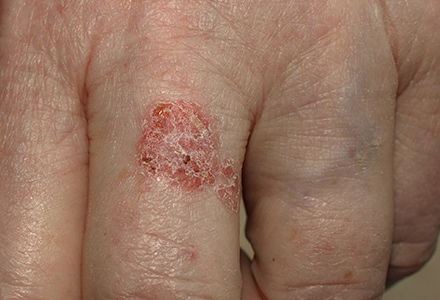Pre-Cancerous Skin Lesions | Mohs & Skin Cancer

Actinic Keratosis
Actinic Keratosis are found on parts of the body that are exposed to sun, and most often in older people. They are slightly raised growths that can be rough and scaly, and are also known as Solar Keratoses.
Actinic Keratosis range from brown to red in colour, and can range in size from one millimetre to several cm in diameter.
They are usually found on areas of high sun exposure such as the scalp, face, hands and arms.
Further facts about Actinic Keratosis:
- A high number of actinic keratosis indicates a higher risk of subsequent development of an invasive skin cancer called squamous cell carcinoma.
- Actinic Keratoses are often able to be touched or felt before becoming visible. They can be detected as rough textured skin, felt when running your fingers over sun-exposed areas. This texture can provide an early sign of Actinic Keratoses development even before they are clearly visible.

Actinic Cheilitis
This form of Actinic Keratosis often forms on the lower lip as this area is exposed to more sun than the upper lip. Actinic Keratosis causes the lip to become cracked, dry, scaly, and pale or white. Actinic Chelitis must be treated promptly to prevent it leading to Squamous Cell Carcinoma (SCC).
SCC on the lip is considered a high-risk area as it has the highest skite related potential for spread to other areas on the body (metastatic spread). If you’re concerned about frequent chapping or burning of your lips then it’s well worth checking with a dermatologist to find out if you have Actinic Cheilitis and get it treated early.

Leukoplakia
Leukoplakia show as white patches on the tongue, cheeks, gums or in other areas inside the mouth. They arise from the mucous membranes and have the potential to develop into Squamous Cell Carcinoma (SCC).
Causes of Leukoplaia:
- Constant irritation caused by habitual alcohol consumption.
- Constant irritation caused by tobacco use.
- Constant irritation caused by round edges on teeth or from dentures.
- Habits such as biting on the inside of the lip (though on the lip these are usually caused by sun damage).

Bowen’s Disease
Bowen’s Disease presents as a persistent red/brown patch that is scaly, and resembles psoriasis or eczema.
Bowen’s Disease is generally considered to be an early stage of Squamous Cell Carcinoma (SCC) which involves the full thickness of the upper layer of the skin (the epidermis). It is important to treat Bowen’s Disease early before it has a chance to invade deeper structures (the dermis).
Exposure to the sun is the most common cause of Bowen’s Disease.
